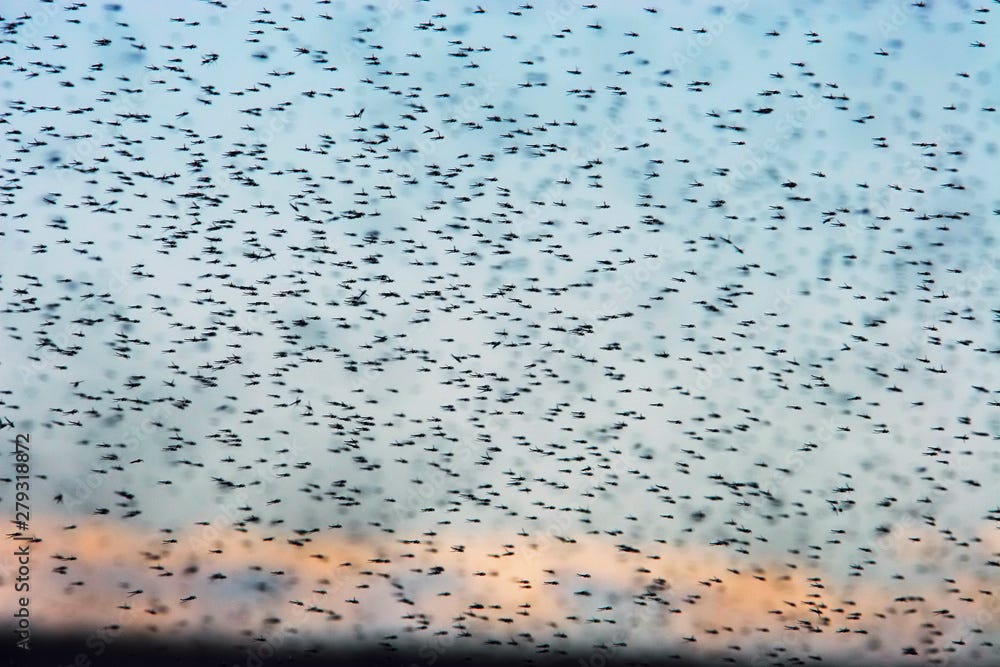Fauci's West Nile Virus infection highlights the need for vaccine and drug development
Limited progress in West Nile Virus research reveals gaps in our public health arsenal
On Saturday, August 24, 2024, it was announced that Anthony Fauci, 83, the former head of the National Institute of Allergy and Infectious Diseases (NIAID) and chief medical advisor to the president during the height of the COVID-19 pandemic, is recovering from a West Nile Virus (WNV) infection. He was hospitalized for several days and believes he contracted the virus from a mosquito bite in his backyard in Washington, D.C.
WNV is a flavivirus, like Zika, yellow fever, and dengue viruses, but unlike the others, it is transmitted specifically by mosquitoes of the Culex species that are widely distributed across most of the United States and Europe. Birds are the natural reservoir and hosts of the WNV and only birds can infect mosquitoes and transmit the virus further. Mosquitoes can’t become infected by biting a human or a horse with WNV.
The virus first appeared in the United States in 1999 in NY. It likely entered the country either through mosquitoes on airplanes or via infected individuals. Previously found only in Africa, the Middle East, Asia, and parts of Europe, the virus has since spread throughout North America.
As you can see below, the worst years on record since the virus appeared in the United States were 2003 with 9,862 reported cases and 2012 with 5,674 cases.
The good news is that the CDC estimates that about 80% of people infected with WNV don’t show symptoms. The risk of illness increases with age, particularly for those over 60, and for individuals with underlying conditions. About 20% of those infected experience symptoms like fever, chills, muscle and joint pain, headaches, vomiting, diarrhea, and rash. Approximately 1 in 150 individuals develop neurological complications as the virus can affect the central nervous system, and around 10% of those severe cases die from the infection.
There are no licensed vaccines or specific antiviral drugs available for WNV and severe cases, like Fauci’s, are treated with supportive care in the hospital.
So far this year, the United States has reported 216 cases of WNV across 33 states, including 142 neuroinvasive cases, which are comparatively low numbers. The map below was last updated on August 20, 2024.
Since no vaccine is available, the best protection against WNV is to avoid mosquito bites. Effective strategies include using insect repellents, installing window screens, wearing long sleeves and pants when outdoors (especially at dusk and dawn), sleeping under bed nets, using indoor fans, and eliminating standing water around your home.
West Nile Virus and biotech
While there are several approved WNV vaccines for veterinary use, no human vaccine has advanced beyond phase 2. The lack of commercial interest has likely hindered the development of a human vaccine. Additional challenges include the unpredictable nature of WNV outbreaks, difficulties in designing efficacy trials, safety concerns, and high potential costs of vaccine programs.
The need for a WNV vaccine became evident during major WNV outbreaks in 2003 and 2012 in the United States, and in 2018 in Europe. Additionally, we also need better treatments to manage severe cases in hospitalized patients.
There are several biotech companies and research organizations that have investigated treatments and vaccines for WNV, but ongoing efforts are very limited.
Sanofi: In 2006, the vaccines division of Sanofi announced an exclusive global collaboration with Acambis to develop and market a WNV vaccine. The vaccine, ChimeriVax-WN02, demonstrated the ability to generate an immune response, with a significant proportion of participants developing specific antibodies against WNV in phase 2 clinical trial (NCT00442169). The vaccine was also well-tolerated overall. Most reported adverse events were mild and consistent with typical reactions seen in vaccination studies, such as pain at the injection site and mild fever. However, to date, ChimeriVax-WN02 has not advanced to phase 3 clinical trials.
Hawaii Biotech: A privately held biotech company focused on the research and development of vaccines tested a recombinant subunit vaccine for WNV, HBV-002, in phase 1 human trials (NCT00707642). The vaccine demonstrated a good safety profile and induced a robust immune response against WNV. Most participants developed detectable levels of antibodies, suggesting that the vaccine could potentially offer protection against WNV. However, the study concluded in 2009 and it has not progressed further. According to the company’s website, current efforts include developing a new vaccine formulation with the SLA-LSQ adjuvant in collaboration with the Access to Advanced Health Institute (AAHI).
National Institute of Allergy and Infectious Diseases (NIAID): Several vaccine candidates were evaluated by the NIH over the years. For example, WN/DEN4Δ30 tested in phase 1 (NCT02186626) in people between 50 and 65 years effectively elicited an immune response in participants. Most individuals developed detectable antibodies against WNV, indicating a strong immune response and the vaccine was well-tolerated with mild to moderate side effects. The study concluded in 2016.
The NIH also conducted a phase 1/2 clinical trial evaluating the safety and efficacy of Omr-IgG-am (NCT00069316), an intravenous immunoglobulin with specific antibodies against WNV, in hospitalized adults with suspected or confirmed WNV infection. The study provided initial evidence suggesting that Omr-IgG-am may be effective in reducing mortality and improving functional outcomes compared to placebo. However, the results were preliminary, and no further studies were conducted since 2007.IrsiCaixa & HIPRA: Last December, Spanish biotech company HIPRA announced its participation in a European research project, coordinated by IrsiCaixa, a private research institute based in Spain, and funded by Horizon Europe, to develop a vaccine and therapies against the WNV. The project, with a budget of €5.7M, involves multiple institutions, including the University of Montpellier, the Technische Universität Braunschweig, the University of Copenhagen, the Center for Genomic Regulation, and the Barcelona Supercomputing Center. The goal is to create a safe and effective vaccine capable of inducing long-term immunity against all genetic variants of WNV. The research team is employing advanced computational tools to identify molecules that could activate the immune system and generate specific antibodies against WNV. In addition to vaccine development, the team is designing specific antibodies that could be used for both therapeutic and preventive purposes, especially in vulnerable populations and regions prone to WNV outbreaks.
Moderna (MRNA): Moderna’s mRNA technology platform has the potential to be adapted for various infectious diseases, including flaviviruses. There is no public indication that they are currently developing a vaccine for WNV, but the have mRNA vaccine for Zika virus in phase 2 clinical trials (mRNA-1893) and a vaccine for dengue in preclinical development.
Inovio Pharmaceuticals (INO): Inovio is a company that focuses on DNA-based vaccines and has been researching vaccines for various infectious diseases, including flaviviruses. Although their current research does not specifically target WNV, their technology platform might be adaptable for WNV. Other companies are also developing vaccines for flaviviruses that could potentially be repurposed for WNV.
Tel-Aviv Sourasky Medical Center: Currently, the only active clinical trial is a phase 2 study (NCT06510426) evaluating the potential benefits of interferon beta (IFNβ1a) for preventing severe neuroinvasive disease in patients with WNV. This trial is based on the observation that many patients with severe WNV disease have autoantibodies against type I interferons, which may impair the immune response and worsen outcomes. The study aims to assess the clinical effects of IFNβ1a in individuals with confirmed WNV infection. It is expected to be completed by December 2025.
Fauci’s recent illness from WNV serves as a reminder of the ongoing risks posed by this mosquito-borne disease. Despite relatively low case numbers this year, the severe potential of WNV, particularly for older adults and those with underlying conditions, is a reason for concern. The lack of progress in developing a licensed human vaccine or effective treatments highlights a troubling gap in our public health preparedness.
DISCLAIMER: This content is for informational purposes only. It should not be taken as legal, tax, investment, financial, or other advice. The views expressed here are my own and do not reflect the opinions of any company or institution.
DISCLOSURE: I have no business relationships with any company mentioned in this article.






No more vaccines. I’ll take the fever.